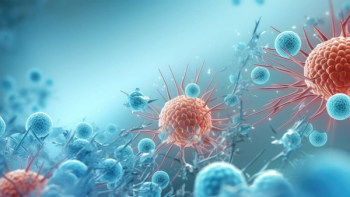
Strategies for Successful Market Access in the Untapped NASH Market
Jayachandra Reddy and Rishit Thakkar discuss the challenges facing early entrants in the Non-alcoholic Steatohepatitis market.
Non-alcoholic fatty liver disease (NAFLD) is the accumulation of triglycerides in the liver cells in the absence of any other specific liver disease. Non-alcoholic Steatohepatitis (NASH) is the severest form of NAFLD, categorized by a buildup of fat in the liver
NAFLD is a major potential threat to public health and a huge
The prevalence of NASH in the United States is
Most NAFLD/NASH patients are asymptomatic or have nonspecific symptoms, such as fatigue. The well-known primary causes of NAFLD are obesity, type II diabetes, dyslipidaemia, and insulin resistance. However, diseases other than metabolic disorders also cause NAFLD. These include disorders of lipid metabolism (hypobetalipoproteinaemia, lipodystrophy), nutritional causes (total parenteral nutrition, starvation), medications (anti-HIV medications), and other causes (environmental toxicity). NASH can lead to other severe liver diseases such as fibrosis, cirrhosis, and hepatocellular carcinoma. NASH patients are also at an increased risk of cardiovascular diseases.
Though liver biopsy is the gold standard to diagnose and stage NASH, it has limitations when it comes to
Treatment and management options
There is no approved treatment available for NAFLD/NASH. Lifestyle modification is the initial therapeutic option. Pharmacological treatment is considered for biopsy-proven NASH. Bariatric surgery is considered the last option to manage NASH. The current treatment and management options are as follows:
Lifestyle modification
Lifestyle modification (diet and regular exercise) is the main standard of care for NAFLD, and is the initial step to manage NASH.
Pharmacological therapy
- Anti-obesity drugs: Some studies on anti-obesity drugs have shown that they may improve NASH symptoms. In a small study on obese patients, Orlistat (inhibitor of fat absorption) caused weight loss and thereby
improved NASH symptoms . However, long-term study data on the efficacy of these drugs on liver-related outcomes is not available, and some drugs may have serious central nervous system-related side-effects.
- Insulin-sensitizing agents: Several anti-diabetic drugs were
studied for efficacy in NASH , considering insulin sensitivity is reduced in these patients. Though these drugs increase the insulin sensitivity, none of them were majorly beneficial in improving liver histology.
Lipid lowering agents
- Statins: Statins reduce cholesterol biosynthesis, mainly in the liver, and modulate lipid metabolism through the inhibition of the enzyme HMG-CoA reductase. Statins are used to treat NAFLD as dyslipidemia frequently coexists with NAFLD/NASH, and there is an increased cardiovascular risk in these patients. However, there is limited
real world data on statin efficacy in these patients.
- Omega-3 fatty acids: These drugs are assumed to have multiple beneficial effects in NAFLD patients, the important reason being the alteration in the hepatic gene expression, thereby increasing fatty acid oxidation and catabolism. They are also known to improve insulin sensitivity, are anti-inï¬ammatory, and reduce tumour necrosis factor-α levels, thus offering several potential therapeutic mechanisms. However, in a large population-based study, ethyl-eicosapentaenoic acid did
not show any significant effects on NASH symptoms .
- Antioxidants: Oxidative stress is an important step in the pathogenesis of NASH and its progression. Vitamin E has antioxidant properties, and is vastly studied as a potential treatment for NASH. Though Vitamin E demonstrated improvement in steatosis in a clinical study, it
failed to improve the necro-inflammatory activity or alanine aminotransferase levels.
Bariatric surgery
Bariatric surgery causes massive weight loss and remarkable histological improvement, including partial reversal of cirrhosis. In morbidly obese patients, bariatric surgery improves the histology, including resolution of NASH in 75% of cases and reduction of fibrosis in 34% of cases after a long follow-up. Massive weight loss associated with the surgery reduces pro-inflammatory mediators, thereby
Pipeline molecules under development
The list of drugs under late-stage development to treat NASH are:
Drug name
Company
Mechanism of action
Phase of development
Special designation (FDA)
Obeticholic acid
Intercept Pharmaceuticals
FXR agonist
Phase 3
Breakthrough therapy
Elafibranor (GFT505)
Genfit
PPAR alpha/delta agonist
Phase 3
Fast track designation
Cenicriviroc
Allerga /Tobira
Dual CCR2/CC5 antagonist
Phase 3
Fast track designation
Selonsertib (GS-4997)
Gilead Sciences
ASK-1 inhibitor
Phase 3
-
Aramchol
Galmed Pharma
SCD1 inhibitor
Phase 2 / 3
Fast track designation
NGM282
NGM Biopharmaceuticals
FGF19 hormone modulator
Phase 2
-
TRO19622
Roche
Apoptosis inhibitor
Phase 2
-
BMS-986036 (PEG-FGF21)
BMS
FGF agonist
Phase 2
-
GR-MD-02
Galectin
Galectin-3 inhibitor
Phase 2
Fast track designation
Volixibat (SHP626)
Shire
ASBT inhibitor
Phase 2
Fast track designation
MGL-3196
Madrigal Pharma
THR-β agonist
Phase 2
-
Solithromycin
Cempra
Macrolide antibiotic
Phase 2
-
GS-0976
Gilead Sciences
ACC inhibitor
Phase 2
-
IMM-124E
Immuron
Immunomodulator
Phase 2
-
GS-9674
Gilead Sciences
FXR agonist
Phase 2
-
LJN452
Novartis
FXR agonist
Phase 2
Fast track designation
LMB763
Novartis
Not available
Phase 2
Fast track designation
Emricasan
Conatus / Novartis
Caspase protease inhibitor
Phase 2
Fast track designation
IVA337
Inventiva Pharma
PPAR agonist
Phase 2
-
MT-3995
Mitsubishi Tanabe
Selective mineralocorticoid receptor antagonist
Phase 2
-
Semaglutide
Novo Nordisk
GLP-1 agonist
Phase 2
-
MN-001 (tipelukast)
MediciNova
LT antagonist / PDE inhibitor / 5-LO inhibitor
Phase 2
Fast track designation
DS102
Afimmune
Anti-inflammatory & antifibrotic lipid
Phase 2
Fast track designation
Saroglitazar
Zydus Cadila
PPAR agonist
Phase 2
-
CF102
Can-Fite Biopharma
Adenosine A3 receptor agonist
Phase 2
-
ACC – Acetyl-CoA carboxylase; ASBT – apical sodium dependent bile acid transporter; ASK-1 – Apoptosis signal-regulating kinase 1; CCR – Chemokine receptor; FGF-19 – Fibroblast growth factor; FXR – Farnesoid X receptor; LO – Lipoxygenase; LOXL2 – Lysyl Oxidase-like protein 2; LT – Leukotriene; PDE – Phosphodiesterase E; PPAR – Peroxisome proliferator-activated receptor; SCD1 - Stearoyl Coenzyme A Desaturase 1; THR-β – Thyroid Hormone Receptor β
The expected early entrants in the NASH market are:
Challenges for the early entrants in the NASH market
Drug pricing: Payers may be reluctant to cover highly-priced NASH drugs, since the drug has to be taken for a longer duration. So, the price fixed by the early entrants will play a major role in market success. Payers may also be reluctant to cover potentially expensive medications, in part because lifestyle modification is often the first line treatment for NASH.
Physician acceptance: Since lifestyle modification is the initial step to manage NASH, physicians might be reluctant to prescribe the drugs for NASH. Hence, targeting and educating physicians will be crucial for the successful market access of products.
Patients’ unwillingness to undergo diagnosis: Although the prevalence of NASH and NAFLD are high, the diagnosis rate is low since liver biopsy is the gold standard to identify the disease. Since liver biopsy is a painful procedure, some patients may opt out of diagnosis, leading to a low diagnosis rate. Hence, patient education on the long-term ill effects of this largely unknown disease is vital for the success of early market entrants.
Diagnosis and staging of NASH: Liver biopsy is the only method available to diagnose and stage NASH. However, this is an expensive and invasive procedure, causing patient discomfort and potential side effects, which can even lead to death. Non-invasive methods are under development. Discovery of easily identifiable biomarker(s) as in patients with diabetes (serum/urine glucose, HbA1c tests) will help monitor/stage the disease, as well as in dose adjustment of the drug thereafter.
Future competition: Many competitors are vying to garner a major share of the untapped NASH market. Considering the unmet needs in this area, the regulators are also promoting the development of promising drugs by providing special designations. A thorough understanding of the strengths and weaknesses of the late-stage pipeline products or next entrants, and their impact on the sales of the early entrants will help in strategizing for the sustained commercial success of products.
Combination therapy: There are a wide variety of compounds with different mechanism of actions in late-stage clinical development to treat NASH. Since NASH is a multifactorial disease, it is most likely that a multifaceted combination therapy will be needed to successfully and effectively treat it. Hence, the collaboration/acquisition of other effective treatments in the pipeline, and testing combination therapies earlier could be one of the incredible strategies for early entrants.
The prevalence of metabolic disorders (including NASH) is increasing at an alarming rate, and the untapped NASH market worth billions is considered as the next big market in the metabolic disorders segment.
Many big (Novartis, Gilead, Allergan, etc.) and small pharma companies (Intercept, Genfit, etc.) are betting big on NASH therapy, considering the large-scale unmet needs and potential financial benefits achievable by being the first entrant in the market.
Some important questions for the new entrants are:
- What should be the optimum prize for the first drug to convince payers, and make it a blockbuster as well?
- How can physician acceptance be increased?
- How can the diagnosis rate be increased to get more patients to treat?
- Are collaborations necessary to develop combination products?
The first entrants of the NASH market should find answers to these questions, which will eventually help them grab a major portion of the potential market. Different market access solutions such as forecasting, pricing strategies, business development/licensing evaluation, and go-to market strategies would help the early entrants for easy access, and increase the potential of their NASH products. Competent partners who have the industry know-how and relevant expertise in this arena can help them strategize better and identify potential avenues.
About the Authors
Jayachandra Reddy has an extensive pharmaceutical background, covering strategic consulting and commercial analytics. Rishit Thakkar is a professional with over 10 years' experience in Research and Analytics. Jayachandra is a Senior Director at
Newsletter
Lead with insight with the Pharmaceutical Executive newsletter, featuring strategic analysis, leadership trends, and market intelligence for biopharma decision-makers.




